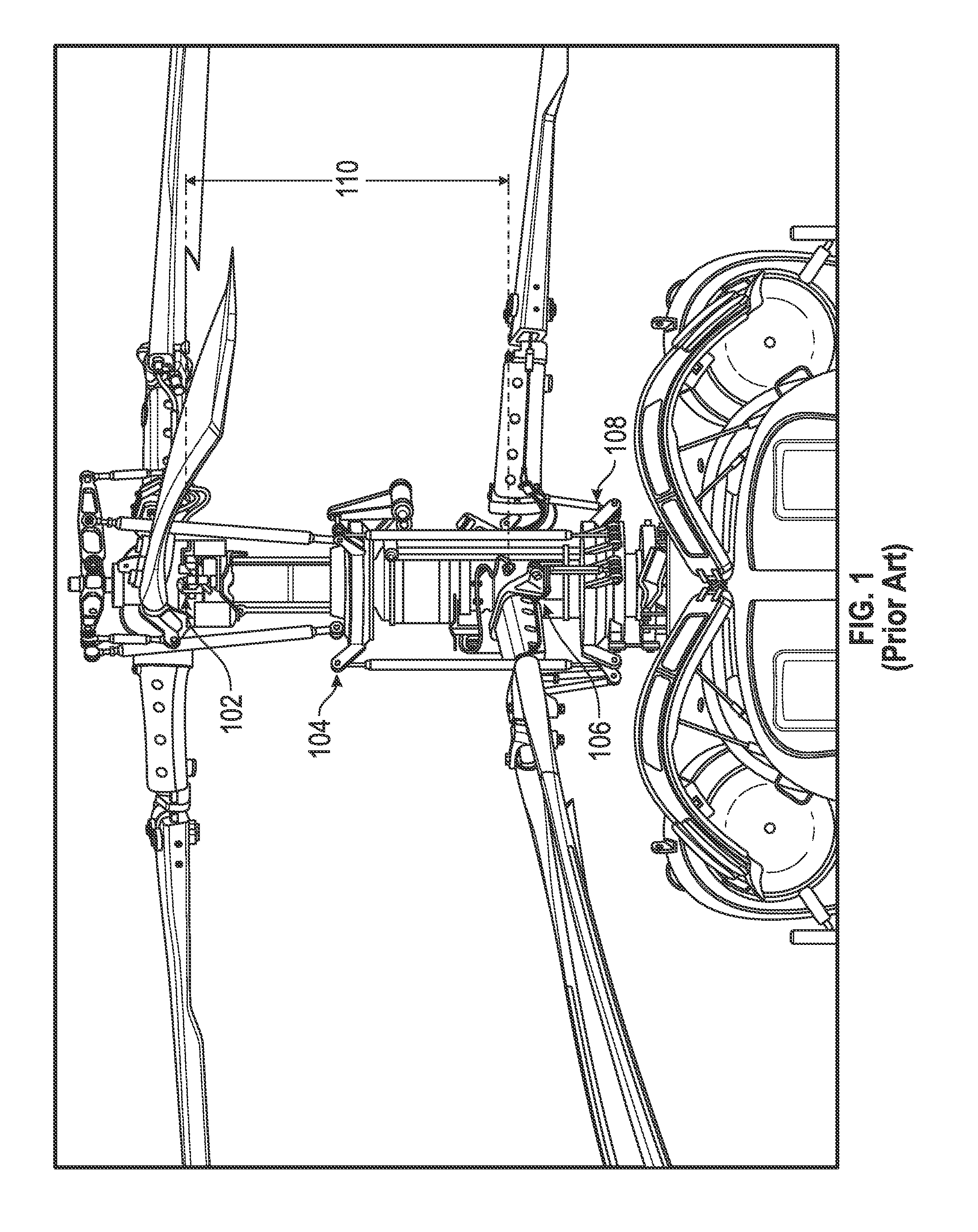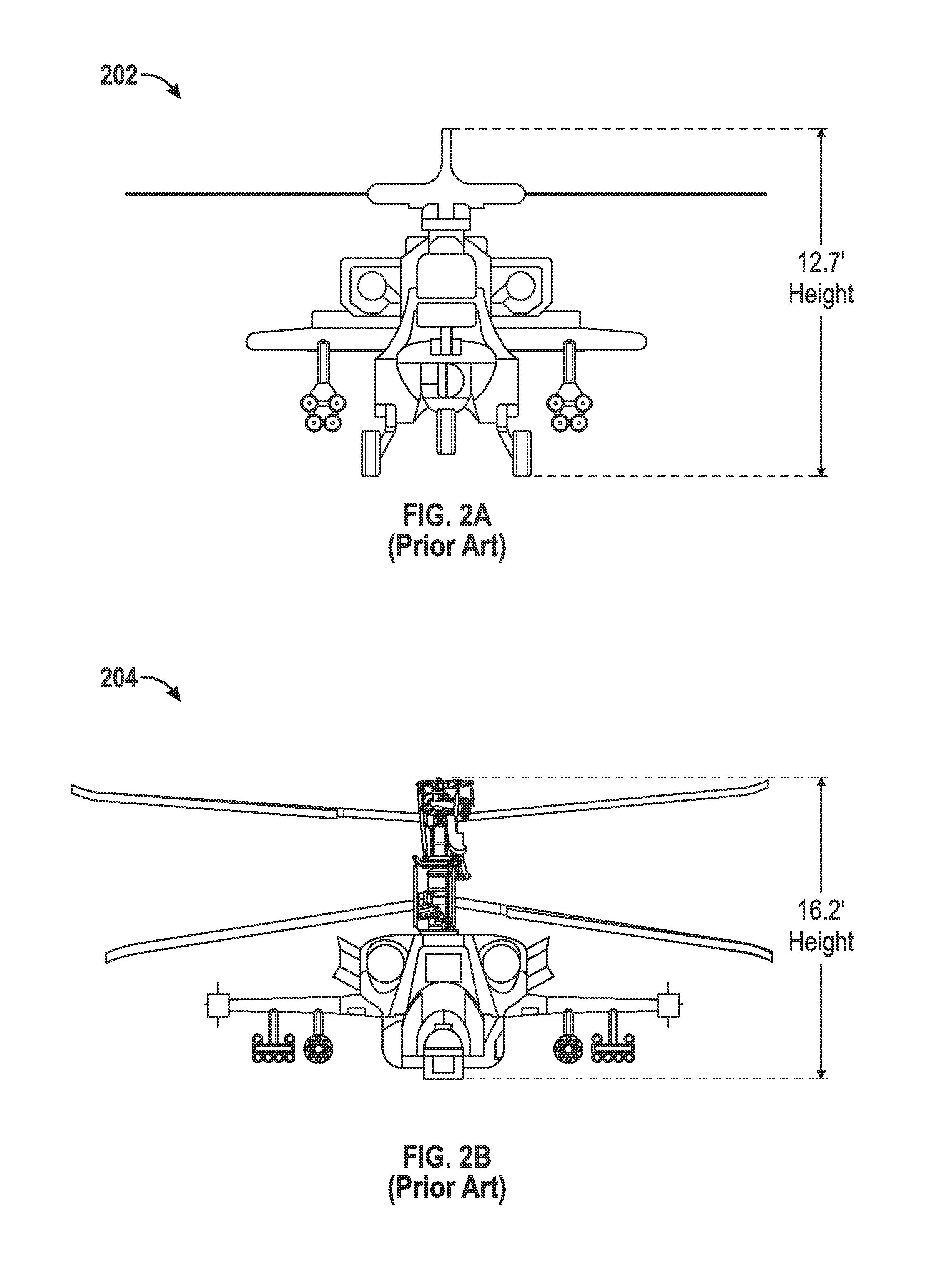Helicopter rotor load reduction and tip clearance control
a technology of rotor load reduction and tip clearance control, which is applied in the direction of propellers, aircrafts, transportation and packaging, etc., can solve the problem that the control of the 2/rev blade typically cannot be accomplished using an ordinary swashplate, and achieve the effect of reducing the vibratory load of the blad
- Summary
- Abstract
- Description
- Claims
- Application Information
AI Technical Summary
Benefits of technology
Problems solved by technology
Method used
Image
Examples
Embodiment Construction
[0015]It is noted that various connections are set forth between elements in the following description and in the drawings (the contents of which are included in this disclosure by way of reference). It is noted that these connections in general and, unless specified otherwise, may be direct or indirect and that this specification is not intended to be limiting in this respect. In this respect, a coupling between entities may refer to either a direct or an indirect connection.
[0016]Exemplary embodiments of apparatuses, systems, and methods are described for using 2 / rev individual blade control (IBC) feedback to reduce 2 / rev blade deflections and loads. In some embodiments, one or more blade sensors may detect 2 / rev bending signals. The signals may be processed and actions may be taken to null or mitigate the impact of the 2 / rev loads. In some embodiments, a controller may convert from commands for lateral, longitudinal, and / or collective blade cyclic pitch (A1s, B1s, Theta) to posit...
PUM
 Login to View More
Login to View More Abstract
Description
Claims
Application Information
 Login to View More
Login to View More - R&D
- Intellectual Property
- Life Sciences
- Materials
- Tech Scout
- Unparalleled Data Quality
- Higher Quality Content
- 60% Fewer Hallucinations
Browse by: Latest US Patents, China's latest patents, Technical Efficacy Thesaurus, Application Domain, Technology Topic, Popular Technical Reports.
© 2025 PatSnap. All rights reserved.Legal|Privacy policy|Modern Slavery Act Transparency Statement|Sitemap|About US| Contact US: help@patsnap.com



